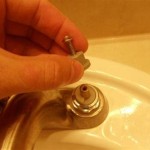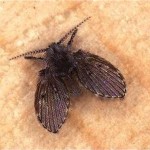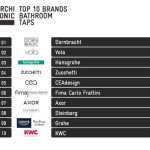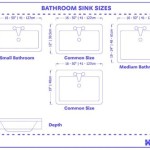Yellow Sticky Substance On Bathroom Wall: Identification and Removal
The discovery of a yellow sticky substance on a bathroom wall can be a source of concern and confusion. While the appearance may not immediately indicate the cause, understanding the potential sources of the substance is crucial for addressing the problem effectively. This article explores common culprits behind the yellow residue, the best methods for removal, and preventative measures to avoid future recurrences.
1. Mold and Mildew Growth
Mold and mildew thrive in warm, humid environments, making bathrooms a prime breeding ground for these microorganisms. The yellow sticky substance could be a sign of mold or mildew growth, particularly in poorly ventilated areas with inadequate moisture control. Mold and mildew often produce a musty odor and can cause health problems, especially for individuals with respiratory issues.
To confirm the presence of mold or mildew, examine the substance closely for fuzzy or powdery growth. Additionally, check for signs of dampness, such as water damage or condensation on the wall. If you suspect mold or mildew, it is essential to address the issue promptly to prevent further growth and potential health risks.
2. Mineral Deposits
Hard water, rich in minerals like calcium and magnesium, can leave behind unsightly mineral deposits, often appearing as yellow or white stains. These deposits build up over time, particularly in areas with frequent water contact, such as shower walls, faucets, and around the toilet. Mineral deposits are typically hard and crusty, and they can be difficult to remove.
To distinguish mineral deposits from mold or mildew, note that mineral deposits usually lack the fuzzy or powdery characteristics of mold. Additionally, mineral deposits are more prevalent in areas with hard water, while mold and mildew require moisture and organic matter to grow.
3. Soap Scum
Soaps and detergents contain residues that can build up on bathroom surfaces, forming a sticky, film-like substance. This residue, commonly referred to as soap scum, is often yellow or whitish and can be difficult to remove.
Soap scum is often found in areas with frequent use of soaps and detergents, such as shower walls, tub surrounds, and sinks. It can also accumulate on tiles and grout, leaving behind a dull and unsightly appearance.
4. Cleaning Product Residues
Even cleaning products can leave behind residues, particularly if they are not adequately rinsed after use. Certain chemicals in these products can react with bathroom surfaces, creating a yellow or discolored film. This residue is often sticky and can be difficult to remove.
To minimize the buildup of cleaning product residues, always ensure that cleaning solutions are thoroughly rinsed from surfaces. Avoid using harsh chemicals or abrasive cleaners that can damage bathroom surfaces.
Removal Methods
The best approach for removing the yellow sticky substance depends on its underlying cause. Here are some effective removal methods for each potential cause:
Mold and Mildew
To eliminate mold and mildew growth, a combination of cleaning and preventative measures is necessary.
- Cleaning: Use a bleach solution (1 part bleach to 10 parts water) or a commercial mold and mildew remover. Apply the solution to the affected area using a spray bottle or sponge. Allow the solution to sit for 10-15 minutes, then scrub the area with a brush or sponge. Rinse thoroughly with clean water.
- Prevention: Address the root cause of moisture buildup. Ensure proper ventilation by running fans during and after showers and baths. Use dehumidifiers to reduce humidity levels. Repair any leaks or plumbing issues promptly.
Mineral Deposits
Removing mineral deposits may require more persistent effort.
- Cleaning: Use a commercial mineral deposit remover or a mixture of white vinegar and water (equal parts). Apply the solution to the affected area, allowing it to sit for 15-20 minutes. Scrub with a non-abrasive brush or sponge, then rinse thoroughly with clean water.
- Prevention: Install a water softener to reduce mineral content in the water. Regularly clean showerheads and faucets to prevent mineral buildup.
Soap Scum
Various cleaning solutions can effectively address soap scum.
- Cleaning: Use a commercial soap scum remover or a mixture of baking soda and water (one part baking soda to two parts water). Apply the solution to the affected area and scrub with a non-abrasive sponge or brush. Rinse thoroughly with clean water.
- Prevention: After every shower or bath, rinse the walls and tub with clean water to prevent soap scum buildup. Use a squeegee on shower doors to remove excess water.
Cleaning Product Residues
Removing cleaning product residues often involves a thorough cleaning process.
- Cleaning: Use a mild cleaning solution, like a vinegar and water mixture, to remove any remaining residue. Rinse surfaces thoroughly with clean water after each cleaning.
- Prevention: Always rinse cleaning products thoroughly from surfaces before they can dry and leave behind residue. Use a specialized cleaning product designed for bathroom surfaces to minimize the risk of residue buildup.
If the yellow sticky substance persists despite cleaning efforts or if you suspect it may be a health concern, it is recommended to consult with a professional cleaning company or a licensed mold inspector. They can provide expert advice and guidance to ensure the safe and effective removal of the substance from your bathroom.

How To Clean Yellow Drips On Bathroom Walls Diy 5 Methods

Sticky Humidity On Bathroom Walls Hometalk

Sticky Humidity On Bathroom Walls Hometalk

How To Fix Yellow Drips On Walls And Ceilings

Yellow Sticky Stuff On The Wall And Fresh Caulk Implying A Fixed Toilet But It Constantly Ran Picture Of Edinburgh Grosvenor Hotel Tripadvisor

What Is Yellow Mold How To Identify Remove

Sticky Humidity On Bathroom Walls Hometalk

Fixing Yellow Oily Drops On Walls Doityourself Com

Fixing Yellow Oily Drops On Walls Doityourself Com
Paint Problem In Bathrooms Professional Painting Contractors Forum
Related Posts







